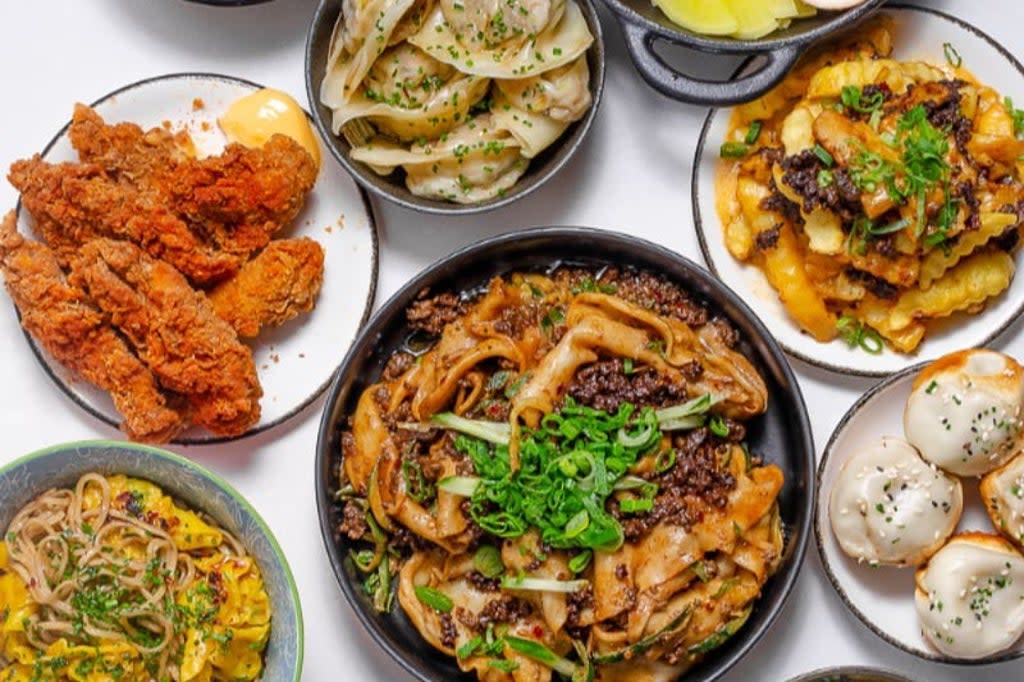From Sichuan to Cantonese and back: where to eat regionally this Lunar New Year

Unless you’ve entered this city wearing blinkers, you’ll have noticed that London is home to many fantastic Chinese restaurants.
This, for all parties involved, is a blessing. Unless you’re trying to decide where to celebrate the arrival of the Lunar New Year, that is. One of the best ways to decipher what will get one’s taste buds tingling is to hone in on an area of China, each of which is blessed with a unique personality.
Cantonese from the Guangzhou Province is by far the most common Chinese cuisine found in the UK, championing intricate dim sum and delicate flavours designed not to overwhelm the proteins in a dish. Seek out Three Uncles for the Roast Duck & Char Siu Lo Mein, Bun House for light, fluffy clouds packed with sticky barbeque pork belly, Michelin-starred Hakkasan for the sweet and sour Berkshire pork, Yauatcha for a modern take on dim-sum, Four Seasons for crispy pork belly, and the Poon’s pop up (10th - 11th Feb) at Mortimer house for the 5 decade old family restaurant’s braised beef flank.
Spicy Sichuan cuisine, known for its bold use of sichuan peppercorns, chilli and garlic, is also fairly easy to come across. Book into Barshu, Wuli Wuli, My Old Place and Er Mei for classics including dan dan noodles, dry wok pork and potato dishes and the enormous sizzling fish hot pots.
Similarly to Sichuan, the sour-hot food of Hunan cuisine can be spicy, though cooks generally emit sichuan peppercorns in favour of more chilli. The succulent, caramelised sugar heavy Chairman Mao’s Red-Braised Pork at Yipin China and Ba Shan mustn’t be missed.
Known for its vibrant, crispy skinned Peking Duck, soy and sesame heavy Beijing (often named Peking) cuisine draws inspiration from much of China due to its bustling and diverse population. The birds served up at A. Wong’s and Imperial Treasure are tough to beat, though Maxim and Cafe TPT’s are great more affordable options.
Try ShaXian and New Aroma for Fujian cooking, which thanks to the province’s seaside location offers up plenty of fruits de mer cooked with only delicate flavouring to showcase the fresh produce. The oyster omelette and gravy soaked hokkien fried rice are definitely worth sampling.
Shanghai is another big city which draws in people from all over the country and as a result its cuisine is a mix of both northern and southern preferences. The city’s famed soup dumplings filled with pork and seafood broth at Dumplings Legend, the less liquid but equally delicious fried bottom pork dumplings at Dumpling Shack and the chicken and duck blood soup at Shikumen are all worth a try.
Silk Road serves up perfectly spiced lamb kebabs, soups, noodles and dumplings from the Xinjiang province, which is a melting pot of the many counties that border it, including Mongolia, Russia, Afghanistan, Pakistan and India, to name a few.
There are several fantastic spots dedicated to serving Shaanxi delights across the capital. Similarly to the food of Hunan, the food is generally hot and sour, though Shaanxi cooks are likely to go much heavier on the onions. Home of what is argued to be the world’s oldest sandwich, Murger Han serves up a modern iteration of it, which consists of slow cooked pork in a flatbread-style bun. Meanwhile, Xian-Expression champions the same addictive hand pulled noodles as you’ll find in the province’s capital, Xian.
If you’re not concerned about pinpointing an area’s dishes, MiMi MeiFair, Park Chinois, and Food House are excellent choices to sample a wide variety of dishes from all over China. And vegans needn’t miss out, either: try the very quaint Mao Chow for a taste of the action.


